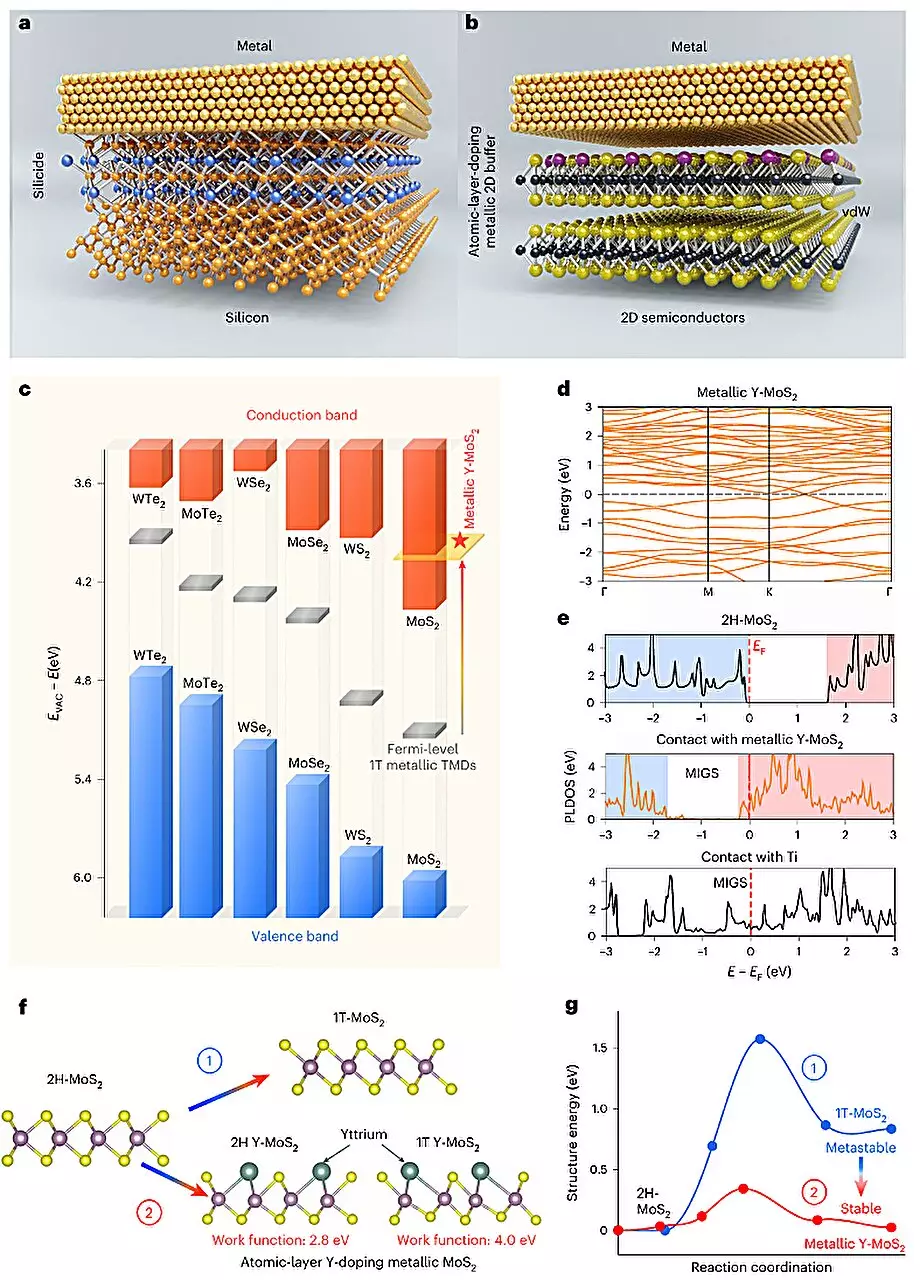In the realm of electronics engineering and material science, researchers have long been on the quest to discover materials that can enhance the performance of electronic devices beyond the limitations imposed by silicon-based transistors. Two-dimensional (2D) semiconductors have emerged as promising candidates for the development of high-performance transistors due to their unique properties. These materials are atomically thin and boast high carrier mobilities, which could potentially enhance the electrostatic control and ON-state performances of short-channel field-effect transistors (FETs).
Despite their advantages, 2D semiconductors are plagued by high contact resistances caused by Fermi-level-pinning effects. These limitations have greatly hindered the performance of these materials in transistors and have impeded their large-scale integration into electronic devices. However, recent research conducted by a team of scientists from Peking University and the Chinese Academy of Sciences offers a promising solution to this critical issue.
The researchers introduced a novel yttrium-doping strategy to address the Fermi-level pinning effects at the interface between metal and 2D semiconductor layers in transistors. This innovative approach involved converting semiconducting molybdenum disulfide (MoS2) into metallic MoS2 by placing a semi-metal layer between a metal electrode and the 2D semiconductor. This new method greatly improved band alignment and enabled the fabrication of ohmic contacts for 2D transistors.
The Plasma-Doping-Annealing (PDA) Method
The team developed the plasma-deposition-annealing (PDA) method to achieve yttrium doping in the surface layer of MoS2. By treating patterned local contact areas with low-power soft plasma to generate active sites, followed by deposition of a Y/Ti/Au stacked metal, they successfully integrated yttrium atoms into the MoS2 structure. The researchers then activated these atoms in the material’s top layer through high-temperature annealing in an inert gas environment.
The 2D Phase Transition
Through their research, the team introduced the concept of “rare earth element yttrium doping-induced 2D phase transition.” This phase transition resulted in the metallization of MoS2 when subjected to their yttrium-doping strategy. Furthermore, they developed a selective-area single-atomic-layer surface doping technique, overcoming traditional engineering limitations and achieving a doping depth at the atomic layer limit of 0.5 nanometers.
The Future of Ultra-Short MoS2-Based Transistors
Utilizing their yttrium-doping strategy, the researchers successfully created ultra-short MoS2-based channel ballistic transistors with excellent performance as ohmic contacts and impressive switching capabilities. These transistors hold great potential for the development of new sub-1 nanometer node chips that offer remarkable performance while consuming less power than conventional chips. Moving forward, the team aims to develop equally efficient p-type ohmic contacts suitable for 2D semiconductors.
The innovative yttrium-doping strategy introduced by the researchers presents a significant breakthrough in the field of electronics. By overcoming the limitations associated with 2D semiconductors, this method paves the way for the development of high-performance transistors and electronic devices that could revolutionize the industry.


Leave a Reply